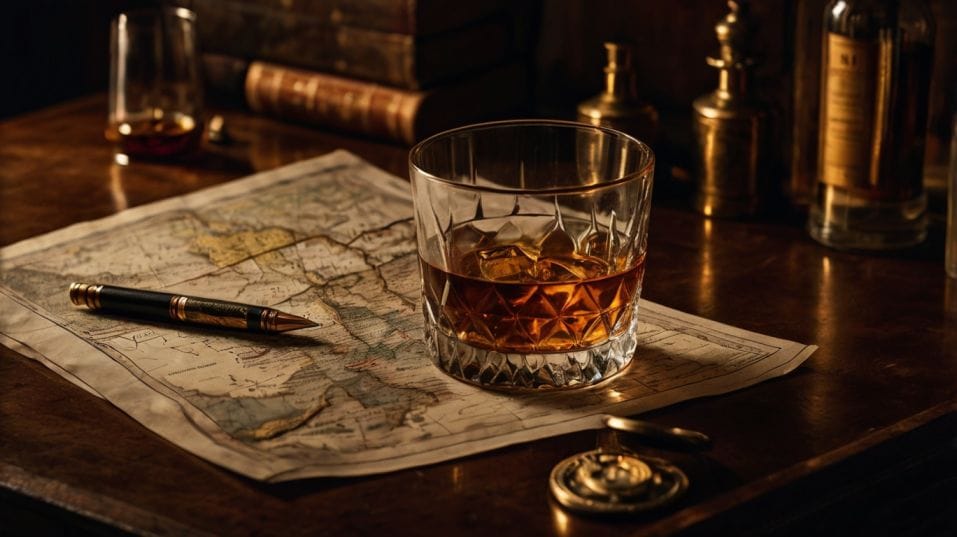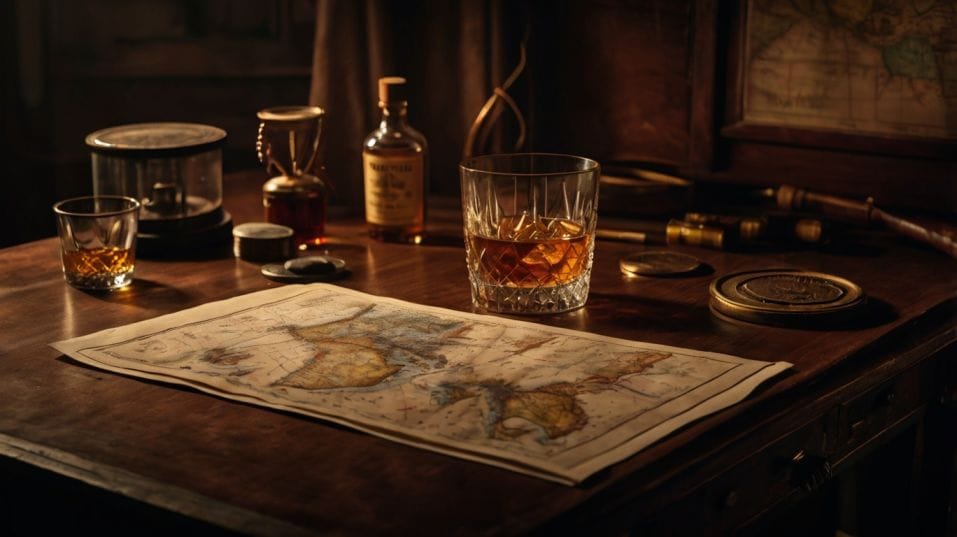Whiskey in Wartime: From Trenches to Treaties
Discover how wartime shaped whiskey's flavor and legacy. Learn to taste with purpose, collect with insight, and explore whiskey with confidence.

What if your next pour could teach you more about history than a textbook? Whiskey wasn’t just sipped during wartime—it was smuggled, rationed, weaponized, and, at times, reborn.
If you're new to whiskey, understanding how conflict shaped its evolution gives you sharper instincts—whether you're tasting, collecting, or simply exploring.
From trenches to treaties, war didn’t just test whiskey. It transformed it. And those battle-born flavors still speak, if you know how to listen.
When Whiskey Was a Weapon
War makes whiskey raw. Not just in proof, but in purpose. On the battlefield, it wasn’t a luxury. It was a lifeline. Soldiers poured it to steady hands, dull trauma, or just remember they were alive.
Officers carried hip flasks not for show but for sanity. And it wasn’t just soldiers. Civilians, cut off from regular supply chains, smuggled, bartered, or home-distilled whatever they could. Whiskey became part medicine, part currency, part rebellion.
You can taste that edge in the wartime spirit—literally. Whiskey made under stress doesn’t chase balance. It gets the job done. It may hit hard, run hot, or feel unfinished. That’s not a flaw. That’s context.
And learning to recognize those signals—sharp grain notes from rushed fermentation, burnt sugar from rough stills, harsh tannins from overused oak—teaches you more about whiskey than any glossy tasting wheel.

Distillers in the Crosshairs
Wartime hit the supply chain first. Barley went to bread. Corn went to feed. Cooperages shifted to building crates and ammunition barrels.
In Scotland and Ireland during both World Wars, entire distilleries shut down or converted to industrial alcohol production.
In the U.S., distillers halted whiskey and shifted to producing neutral spirits for the war effort—essentially fuel for tanks and torpedoes.
Smarter, Not Louder
But not all distilling stopped. It just got smarter. Bootleg operations exploded across occupied Europe.
In Ireland, dry or low-stock years led to grain substitutions that created unexpectedly peated or smoky profiles in otherwise mild blends.
In Scotland, distillers reused casks far past their prime, creating unpredictable wood extraction patterns—spicy, bitter, even sour elements that weren’t part of the original plan but became a wartime signature.
Learning to spot those deviations hones your palate fast. If a whiskey tastes “off,” ask yourself: Is it flawed? Or is it telling you where it came from?
Maybe it's not over-oaked—it’s overworked. Maybe it’s not under-aged—it’s under siege. That insight elevates you past the beginner stage. You're not just reacting to flavor. You’re reading it.
Whiskey as Political Currency
Once wars end, whiskey becomes more than just a drink—it becomes diplomacy. Bottles gifted between allies. Trade deals inked with cask clauses.
In post-WWII Europe, American bourbon flooded black markets, sometimes worth more than currency. In Japan, Scotch and bourbon weren’t just imports—they were identity markers. A signal of modernity, masculinity, Western alignment.
Bottles That Moved the Needle
This matters for collectors. You’re not just collecting bottles—you’re collecting moves. A 1940s Japanese blend isn’t just rare—it’s an artifact of recovery.
A postwar American bottled-in-bond bourbon doesn’t just have age—it has authority. These bottles weren’t made to please modern drinkers.
They were made to show strength. To project stability. If you want to build a smart collection, start with bottles that mark shifts, not just status. Look for wartime restarts, post-embargo exports, Cold War reopenings.
Even in today’s releases, you can taste that DNA. Distilleries that rebuilt from scratch learned to prioritize adaptability—cleaner fermentation, faster turnover, tighter grain sourcing.
That gave rise to modern precision styles: clean, fruit-forward Japanese whiskies; high-rye American bourbons; even the no-age-statement revolution in Scotch. What looks like marketing now often started as necessity.
Conflict Shapes Character
Whiskey is muscle memory. Every decision—how long to ferment, which grain to use, how to char a barrel—traces back to who was in power, what was available, and what needed to be endured.
War didn’t just make whiskey scarce—it made it stronger. More focused. More essential. That gives you a sharper tool as a taster.
When you nose a glass, don’t just chase vanilla, caramel, and spice. Ask: What was this whiskey made to do? Impress? Soothe? Last? Feed a nation, or just get a soldier through another day?
Whiskey appreciation deepens when you chase intention, not just flavor. A 1940s Scotch might taste thin by today’s standards—but it’s not built for modern luxury.
It’s built for clarity. You’ll find that in the mouthfeel: lean but electric. In the finish: short but sharp. These aren’t accidents. They’re imprints of urgency.
Taste Like It Matters
Your technique should evolve from passive sipping to active listening. Stop chasing perfect pours. Chase purposeful ones. Try whiskeys made during or modeled after wartime conditions.
Look for bottlings from “silent still” years. Explore blends that shifted recipes due to rationing. Dig into stories behind oddball grain combinations or reused barrels. The more historical tension a bottle carries, the more it can teach you.
Approach each pour like a question: What pressure created this flavor? Political, agricultural, emotional—those pressures show up.
You’ll taste them in the gaps, the sharp edges, the surprising moments of softness. That’s where whiskey stops being a product and becomes a message.
And as your palate grows sharper, your collection will start reflecting substance over hype. You’ll skip gimmicky packaging.
You’ll bypass the unicorn bottles. Instead, you’ll build a library of resilience—pours that stood up under fire and still stand strong in the glass.
Final Thoughts
Whiskey’s real beauty doesn’t come from ideal conditions. It comes from survival. From its ability to hold flavor in the middle of chaos, and carry stories through time.
That’s what you’re learning when you study whiskey in wartime—not just how it tastes, but why it tastes that way.
So don’t wait for a rare bottle to land in your lap. Find something with history behind it. Something imperfect. Something that speaks. Taste it with intention. Let it punch back a little.
And let that experience sharpen your instincts—because the more clearly you hear whiskey’s past, the more confidently you drink its future. Start now. Pick a bottle with scars. Pour with purpose. Taste what survived.




